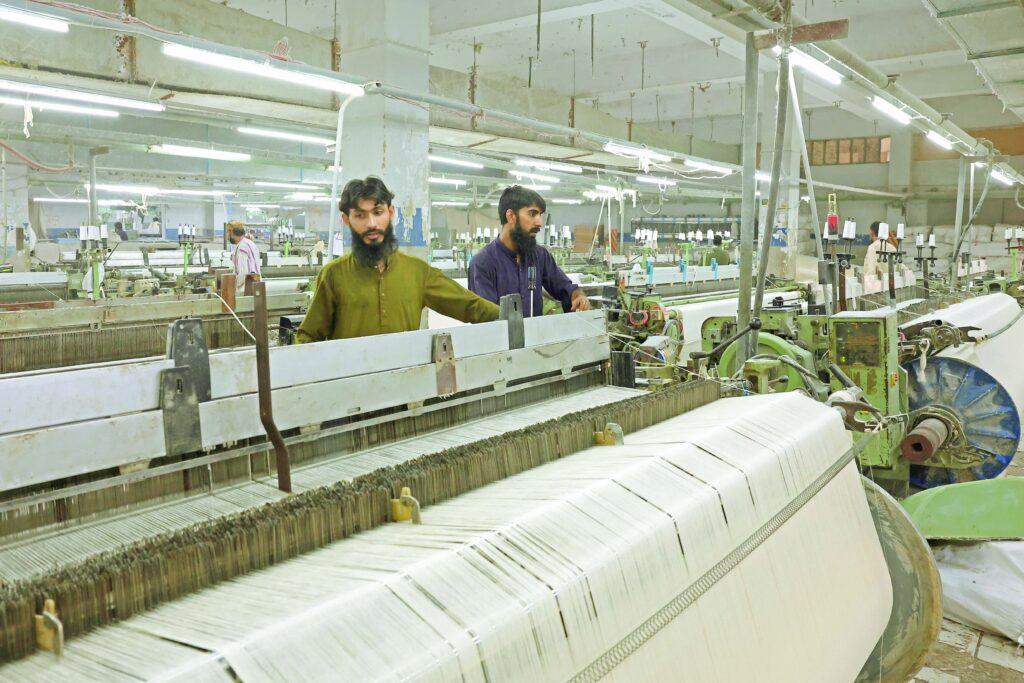Karachi:
Pakistan, who had considered himself unharmed by the US Customs War, based his view of the fact that US President Donald Trump’s previous tariffs had not targeted Pakistan, has now been captured by the guard of the US 29% duty. This will have a significant impact on its export sector, especially the already stagnant textile industry. The result will be a serious battle for exports, foreign reserves and employment, which further aggravates the country’s financial challenges.
The country had even considered inviting Chinese factories to move to avoid the tariffs imposed on China. However, this effort failed in the past due to an unfriendly business environment and political instability caused by the ongoing power struggle between politicians and the establishment.
The United States has imposed mutual tariffs for its trading partners, including Pakistan, to increase domestic production and generate revenue. These tariffs range from 10-48% in addition to a universal 10% tariff used for all countries.
By 2024, US Imports amounted to $ 3.36 trillion, reflecting a 6% year to year (yoy) increase, according to the trade card. Mexico was the largest contributor to the US import (15%), followed by China, Canada, Germany and Japan, with shares from 5-14%, according to Topline Securities. In contrast, Pakistan’s share was only 0.16%compared to Vietnam (4.2%), Bangladesh (0.26%), Sri Lanka (0.09%) and India (2.7%). Despite its small share in US imports, the United States Pakistan’s largest export destination remains and accounts for $ 6 billion annually, or 18% of Pakistan’s total exports.
Textile industry is facing customs challenges
Textiles make up 75-80% of Pakistan’s exports to the United States with other exported goods, including leather, surgical instruments, rice, cement, steel products and salt. Pakistan’s textile exports are primarily competing with China, India, Vietnam, Cambodia, Indonesia and Bangladesh. The imposed tariffs on textile exports vary: China (34%), Vietnam (46%), Sri Lanka (44%) and Bangladesh (37%) face higher duties than Pakistan (29%), while India benefits from a slightly lower duty (26%).
Pakistan and India export similar textile products (product codes 61, 62, 63 and 52), which means that India has a competitive advantage due to its lower customs rate. Conversely, higher duties on Bangladesh and Vietnam provide some relief to Pakistan’s textile exports. But with higher tariffs in China, Vietnam and Bangladesh, these countries may be able to shift their focus to the European market and intensify competition for Pakistan’s exports in this region.
Businesses affected by the US Customs
The most important Pakistani textile companies affected by US customs policies include Interloop Limited (ILP), Feroz Mills (FML), Kohinoor Textile (KTML), Nishat Mills (NML) and Yellow Ahmed (GATM). Outside of the textile sector, companies such as Service Global Footwear (SGF), Matco Foods (MFL), Fast Cables (FCL), International Steels (ISL), International Industries (Inil), DG Khan Cement (DGKC), Power Cement (Power) and Mitchell’s Fruit Farms Limited (MFFL) also have us exposure. In addition, Pak Elektron (Pael) has recently begun exporting transformers to the United States, according to Topline SE.
Trade balance, export distribution
Pakistan’s trade balance with the United States remains in profits. In FY24, Pakistan exported $ 5.44 billion to the United States to the United States, while importing $ 1.88 billion, resulting in a $ 3.57 billion trade surplus, according to AHL. This was a slight fall from FY23’s profit of $ 3.72 billion due to a 6% decrease in exports and an 8% reduction in imports. From FY25 to date, the $ 2.51 billion profit is exporting to $ 4.01 billion and imports to $ 1.50 billion.
Textiles continue to dominate Pakistan’s exports to the United States and account for 91.9% of total exports in FY24, equivalent to $ 5 billion. In the first eight months of FY25, textile exports amounted to $ 3.7 billion, increasing their share to 92.8% despite a total decline in exports. The contribution of the food fell slightly from 3.3% in FY24 to 3.2% in the FY25, while the steel sector remained stable at approx. 1%. Cement exports, though less, increased from 0.3% in FY24 to 0.5% in FY25.
Affordable strategies for Pakistan
In order to mitigate the impact of the 29% US customs rise in Pakistan’s exports, especially in the textile sector, the country needs a strategic, politically driven reaction. The most important strategies include negotiations on mutual trade agreements to reduce customs duties on exports, especially textiles and lower duties on US imports such as raw cotton to maintain competitiveness.



